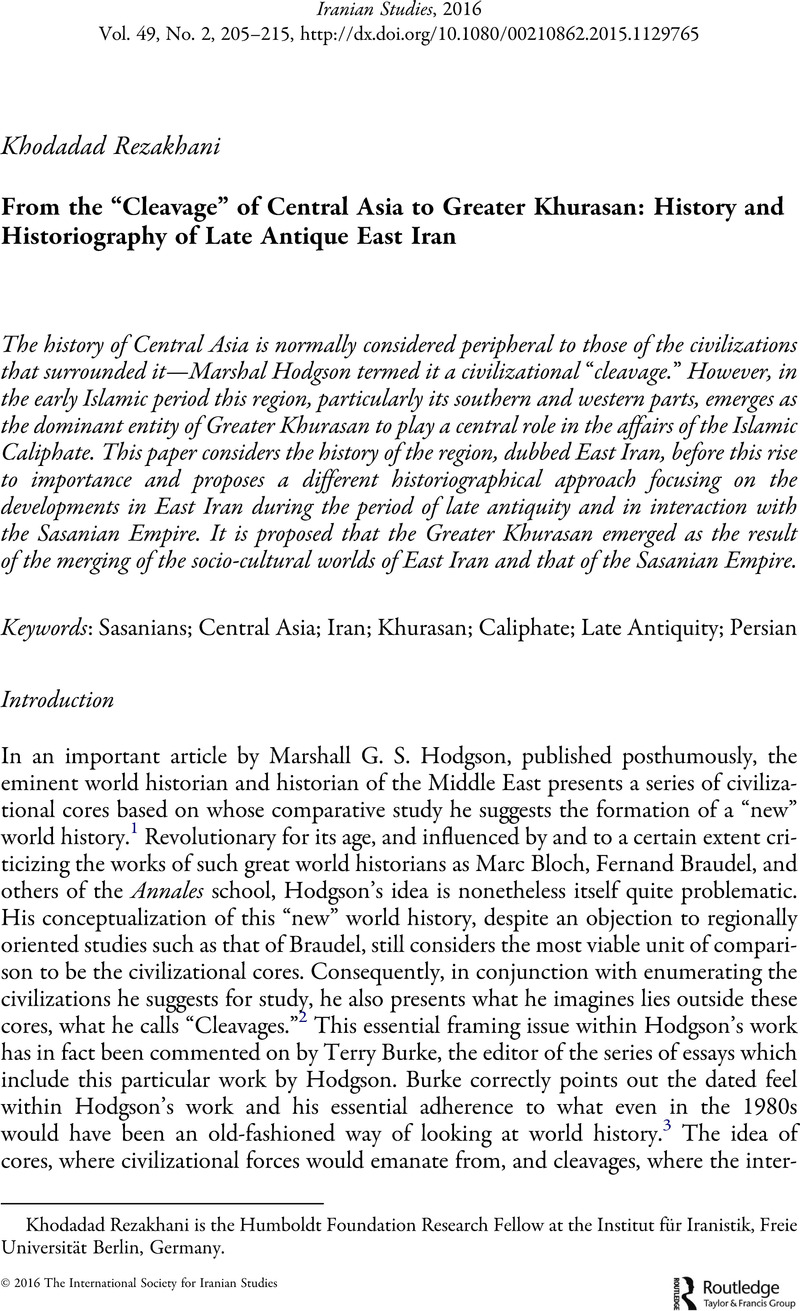Hodgson, Marshal G. S. “
The Interrelations of Societies in History.”
Comparative Studies in Society and History 5,
no. 2 (
1963):
227–
250 (republished in
Rethinking World History. Cambridge: Cambridge University Press, 1993). doi: 10.1017/S0010417500001626
CrossRefGoogle Scholar 